Weekend BQ Team Ride (socially distant)
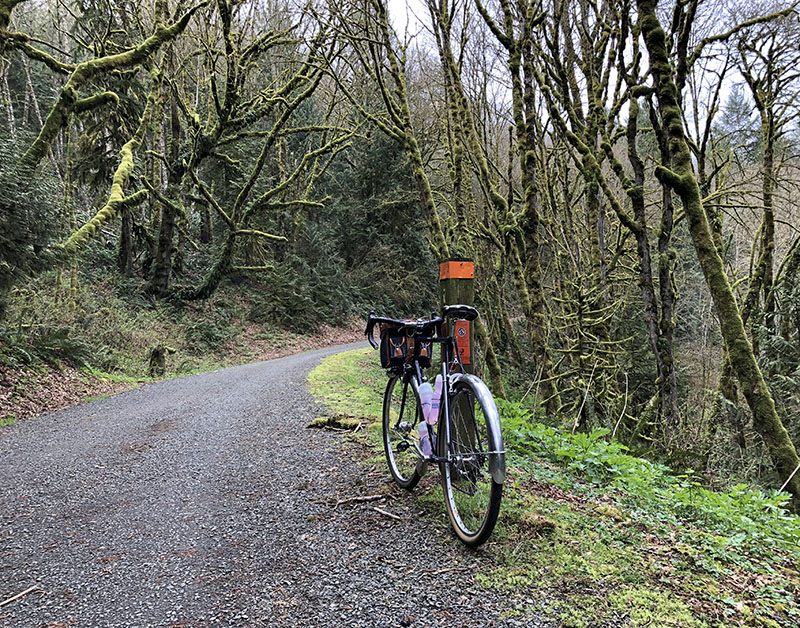
Last weekend, the BQ Team went on one of our typical rides: A 100-mile (160 km) romp through the Cascade foothills on familiar roads. Of course, we didn’t ride as a group – we’ve given that up for more than a month now, even before the official social distancing guidelines went into effect here in Washington State. We realized that even though riding side-by-side might be safe, we couldn’t be sure. And most of all, it would send the wrong message to others – that somehow, riding in groups was still OK. So we’re doing our team rides solo. Here’s how we rode last weekend:
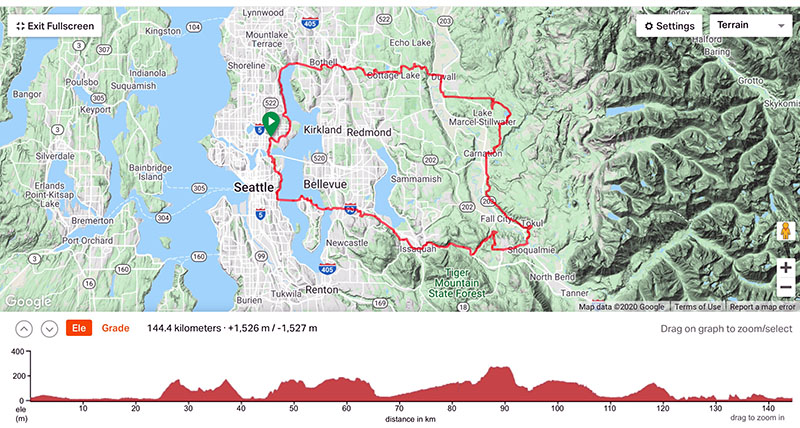
Steve planned the route. The high passes of the Cascade Mountains are still covered in snow, but the foothills provide ample challenge… It’s a route that doesn’t see too many cyclists – social distancing is difficult when you pass or are passed by other cyclists. And yet it’s not so far off the beaten path that it could be considered dangerous.
Mark went and did the ride on Saturday, while Steve and I rode on Sunday. (Ryan was out of town.) To maintain social distancing, Steve and I rode the loop in opposite directions.
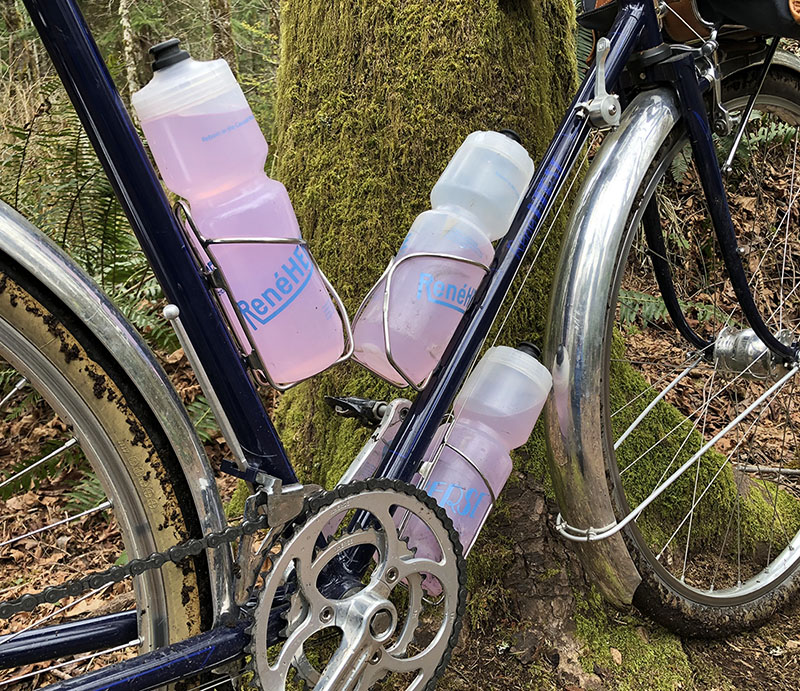
First I prepared my bike. I decided that I’d forego stops at bakeries and convenience stores. Social distancing is especially important when we go to places where we usually don’t go. I decided that I’d carry everything I’d need for the ride, with no resupplies. The forecast was for a warm day, so I put a third bottle cage on my bike. I packed a lot of food in my handlebar bag. I also brought a face mask, in case I had to head to a store for something unforeseen.
It felt familiar, because it was no different from our summertime adventures, when we head out into the mountains. We often ride far off the beaten path, where there are no stores and no cell phone coverage. We’re used to being self-reliant, and that includes our bikes. I didn’t need to check that my bike was in perfect condition and unlikely to break down – it always is. My handlebar bag already contained two spare tubes, a glueless patch kit, a tire boot and all the tools I might – but probably wouldn’t – need.
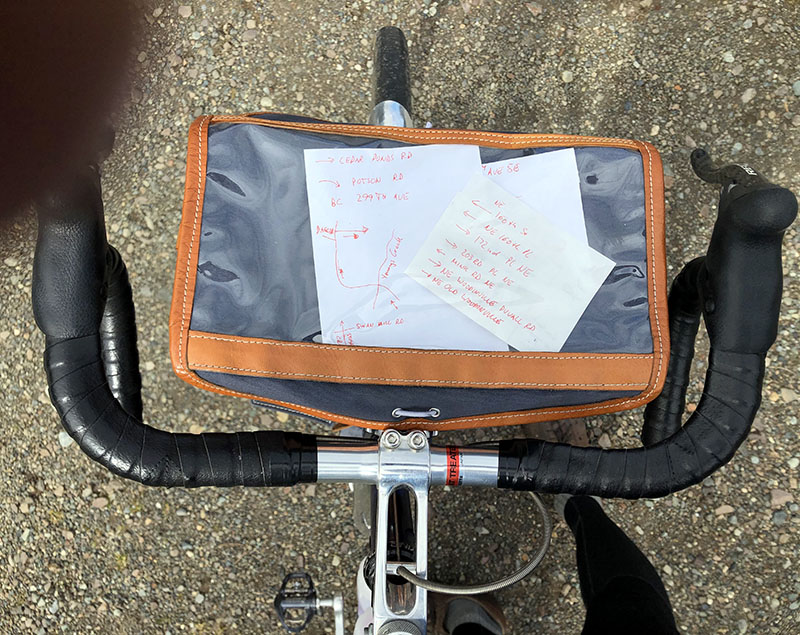
I also made some rudimentary route sheets for the sections that I wasn’t sure I’d remember. When I ride with friends who know a course, I don’t always pay attention to each turn, and I hadn’t ridden all parts of the road alone. If I was heading into the mountains, I’d also bring maps, but the risk of getting lost in the foothills is small. Even if I did get lost, I’d end up on familiar roads in short order.
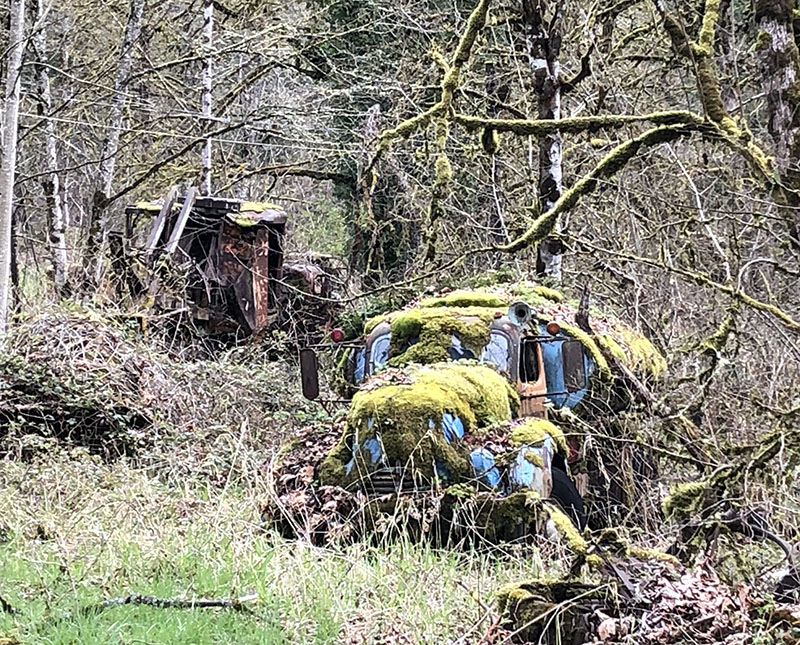
Once I set out, I realized that riding alone is different. Heading out of town on the Burke-Gilman Trail, the flat stretch along the shore of Lake Washington was much longer – and more boring – than I recalled. Usually, we chat as we spin along, and we’re out of town and into the hills before we know it. On this morning, it seemed a lot longer before the gravel of the Pipeline Trail – it carries water from the Cascade Mountains to Seattle – crunched under my wheels.
On the plus side, I could stop and take photos without having to sprint afterward to catch up to my friends. Riding alone lets us discover things we may overlook when we’re focused on our group ride – like these old trucks that are becoming part of the landscape. I had seen them years ago, but hadn’t noticed them recently. I was almost surprised that they were still there.
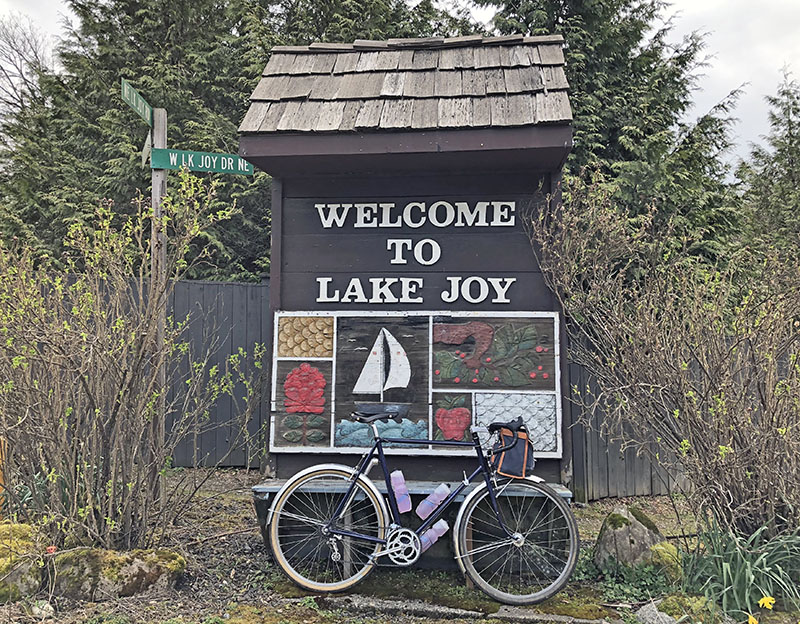
Lake Joy marks the beginning of the real gravel roads that head into the Cascade foothills. I’d always wanted to check out the cute sign of this little community. It’s nice to see a sign saying “Welcome” rather than “We report all suspicious activity!”
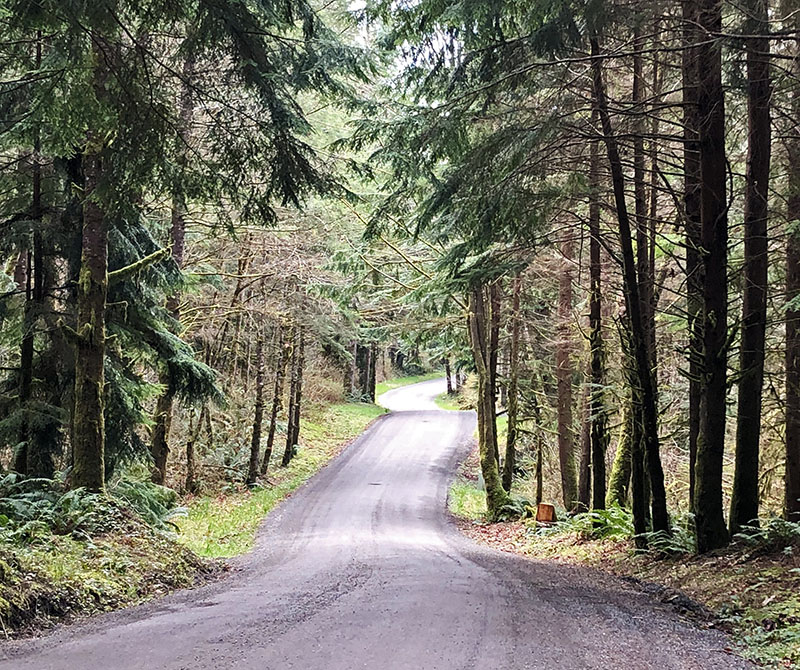
Before the ride, I had told myself not to take any risks, because we’ve all heard that cyclists must be careful, so we don’t end up in already overcrowded emergency rooms. In practice, I realized that this doesn’t require much change. I reflected on the (few) accidents I’ve had, and almost all were caused by inattention, and not by going too fast on loose surfaces. I slowed down a tad more for the corners, but I also realized that immersing myself fully in the ride is the best guarantee for safety.
Steve and I first had planned to do a picnic near the half-way point – appropriately socially distanced, of course. But even that seemed inappropriate for this time. So we’d just wave as we met on the course.
I suddenly could feel his presence, and then I saw him coming the other way. We stopped chatted for a few minutes, each on opposite sides of the road (and not downwind from each other). The sight of him smiling, straddling his ‘Frek’ on the sun-drenched road, is etched into my memory. I realized that I was smiling for miles afterward.
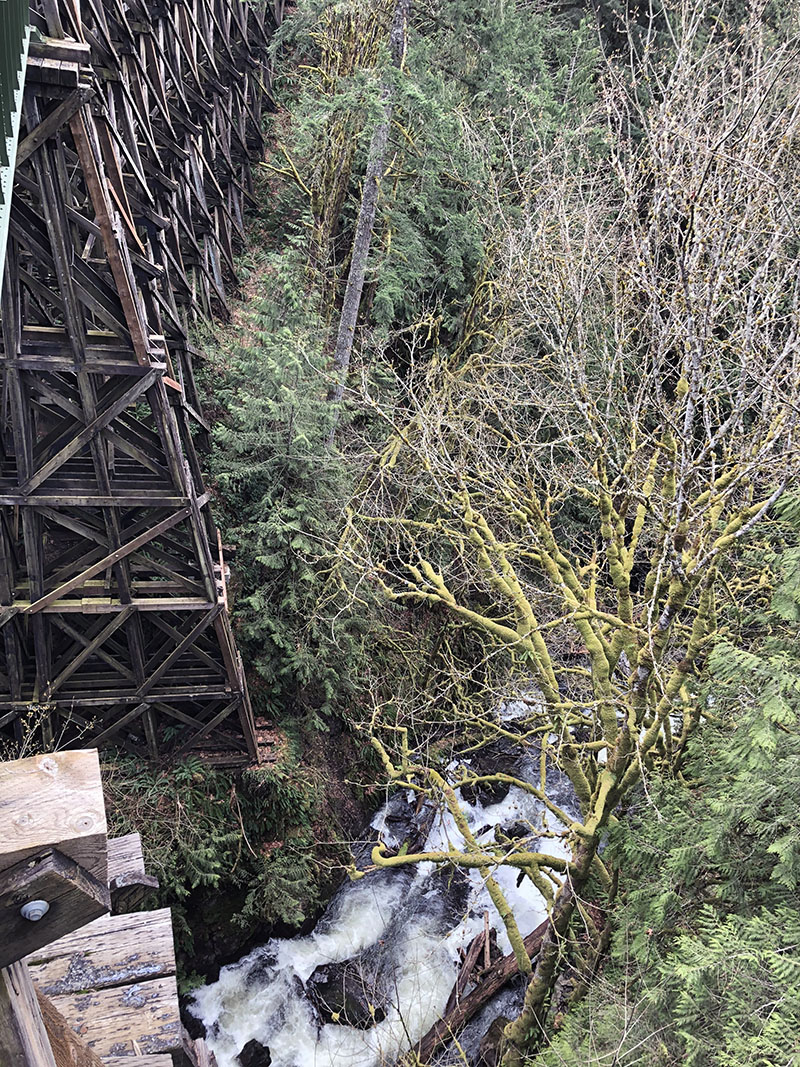
The trail in the Snoqualmie Valley runs on an old railroad line. There’s a spectacular trestle that you don’t really notice unless you stop and look over the side. (I suspect that is on purpose, as trail users might suffer from acrophobia if they knew that they are walking or riding more than 100 feet above the roaring creek.)
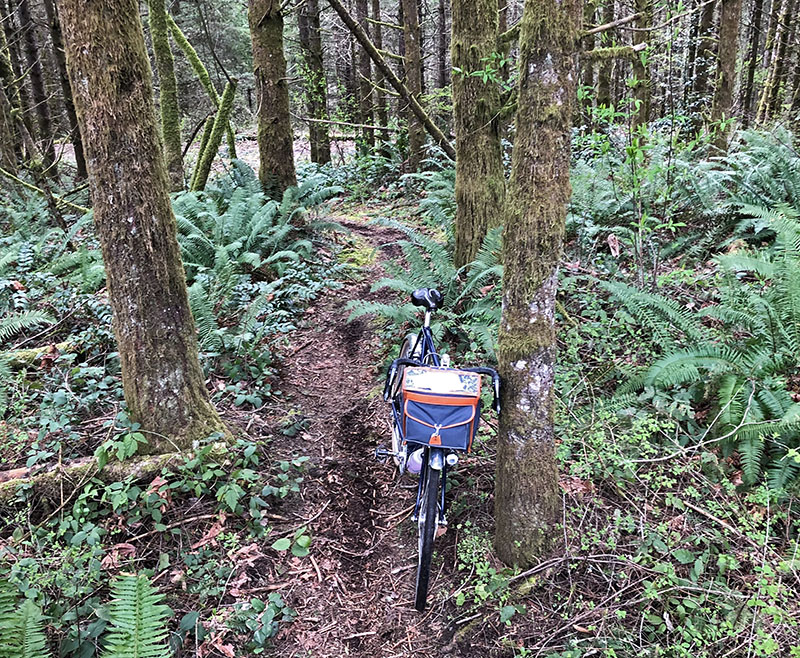
The trail officially ends just after a little tunnel, but there is a semi-secret path through the forest that connects to a road.
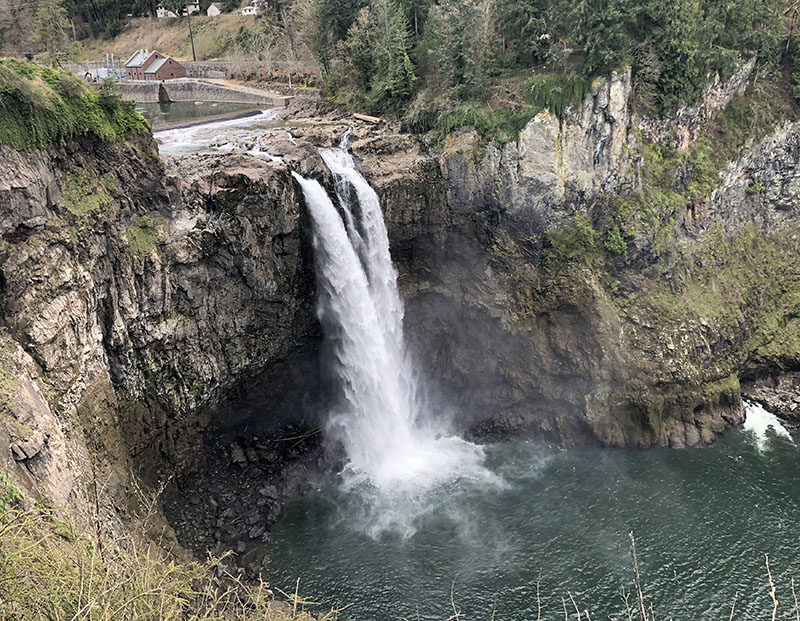
From there, it was just a mile or two to Snoqualmie Falls. After I rode up to the deserted overlook, I realized that the falls are officially closed. Oops! I won’t make that mistake again.
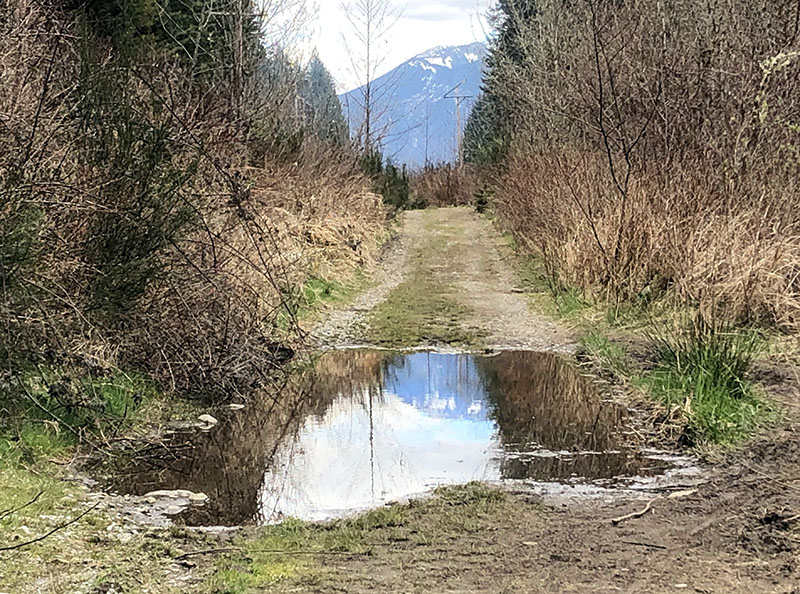
To add some interest to the ride, Steve routed us on trails above Snoqualmie Falls. Somehow, I missed a turn and continued on a powerline trail. Not that I minded – it was fun to ride there, dodging deep puddles as I powered across the rough gravel.
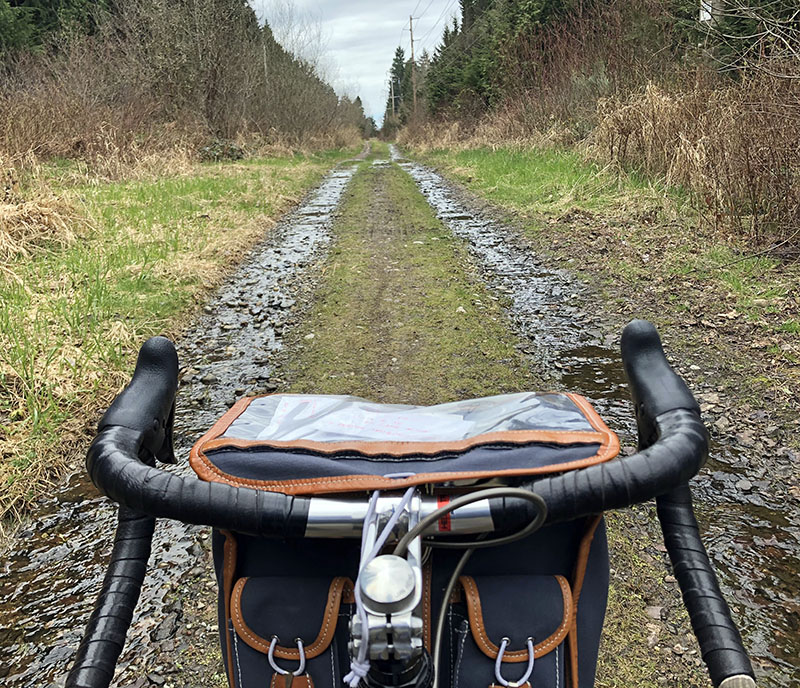
After a while, I realized that this trail was heading too far south, when I needed to go west. So I stopped and consulted the map on my cell phone. Instead of backtracking, I decided to take another trail that would connect to the route eventually.
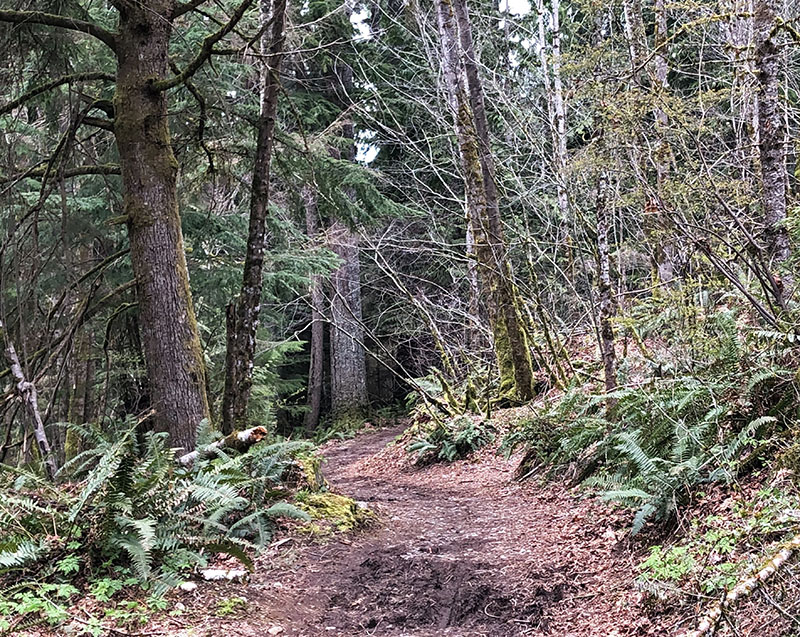
This led to another exciting discovery: I had heard about the mountain bike trails at Snoqualmie, but I hadn’t actually explored them. But how would my randonneur bike fare on these muddy trails?
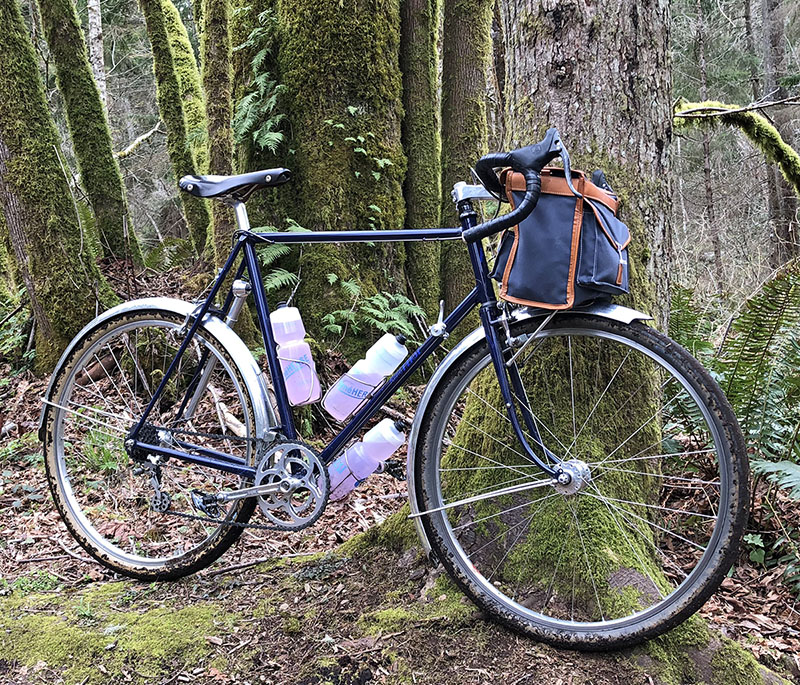
It was just fine: The trails weren’t too technical, and it didn’t even feel like underbiking. But then, 42 mm-wide tires used to be what you found on mountain bikes.
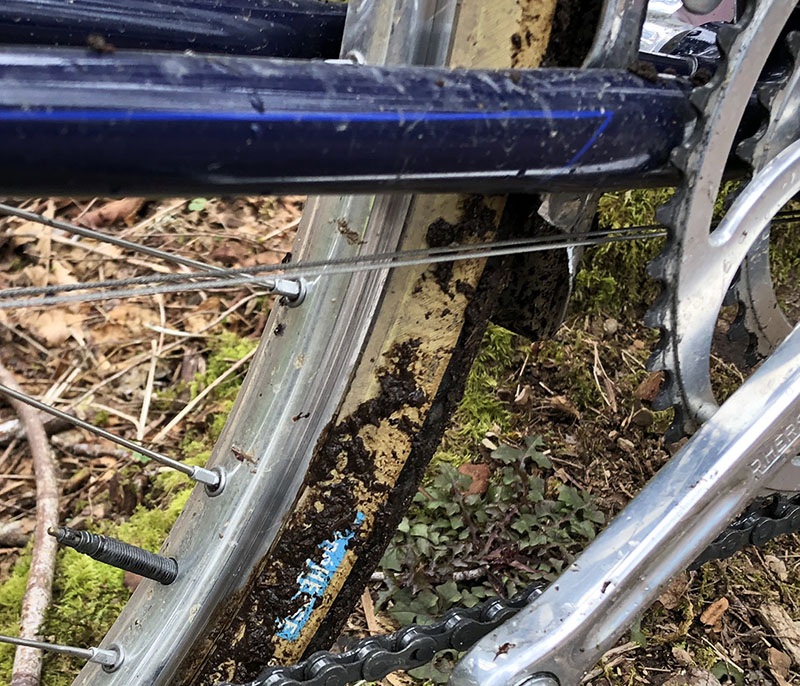
My Babyshoe Pass Extralights with their smooth all-road tread handled the mud without problems. If it had rained the night before, I might have slipped a bit here and there… My fenders kept the bike and me clean.
A wonderful switchback descent dropped me onto the trail that I should have used all along. I was glad that I hadn’t brought my GPS, because then I would not have discovered these exciting trails.
I even found time to do a few video selfies. (Propping my phone on a box of cookies and stabilizing it with a stick worked remarkably well.) After getting back on course, I continued on familiar roads back to Seattle.
Enjoying this ride together with the team – but distant – made it special. What are your ideas about riding with friends during social distancing?
More info:


